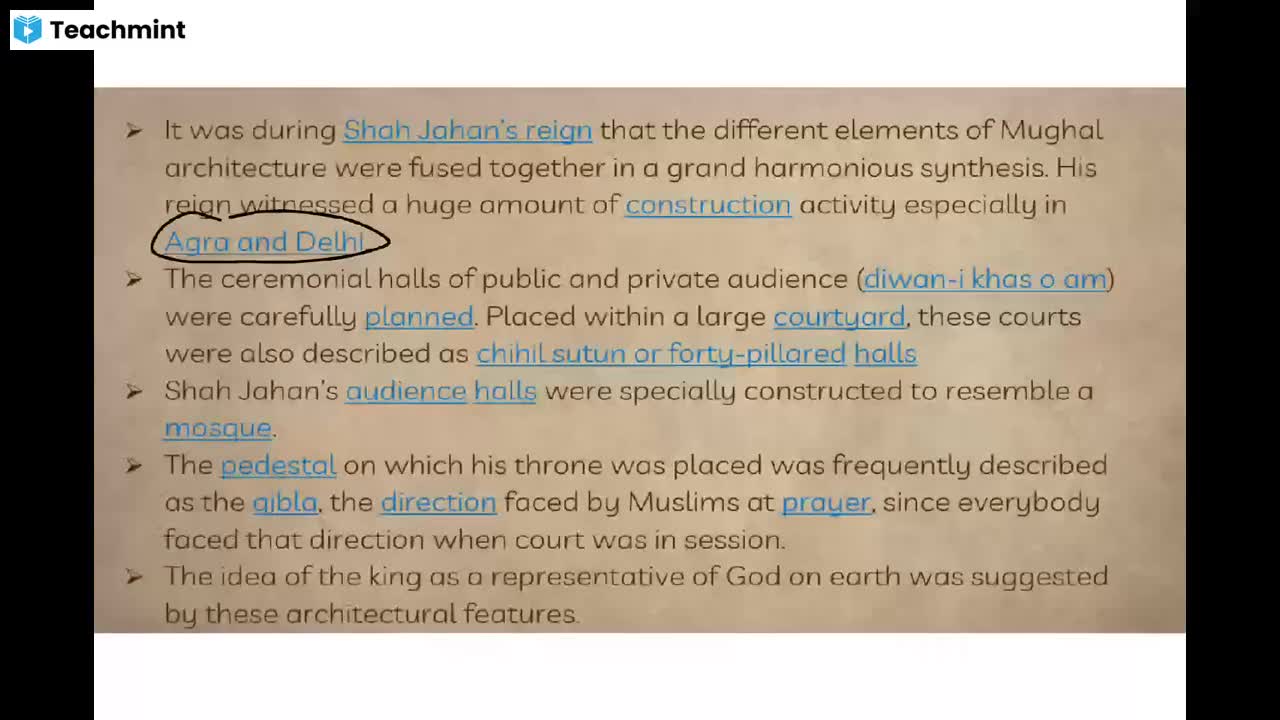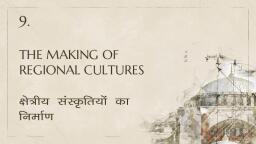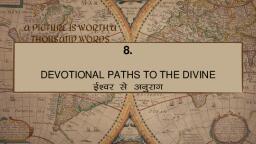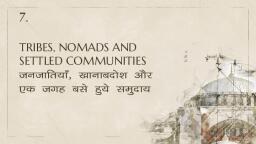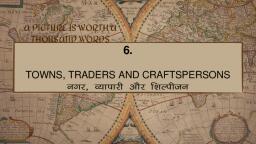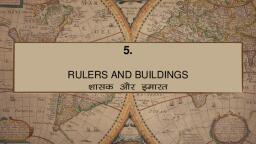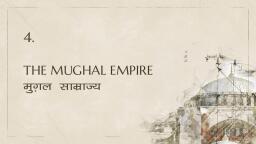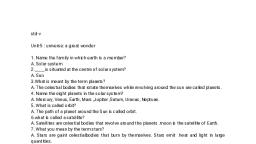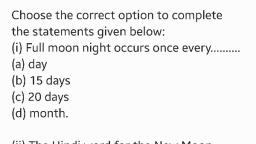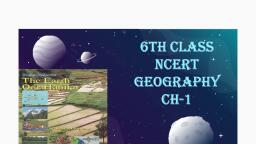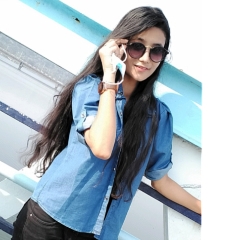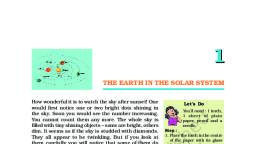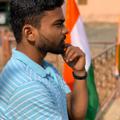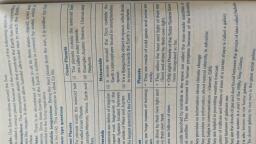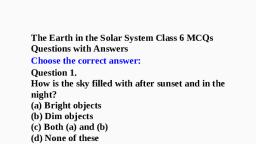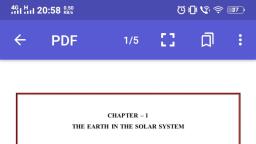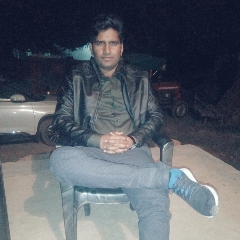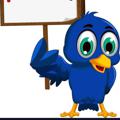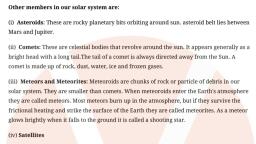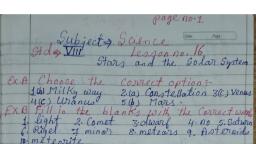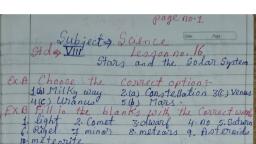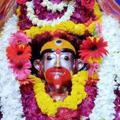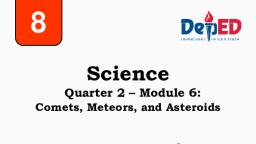Page 1 :
6TH CLASS, NCERT, GEOGRAPHY, CH-1
Page 2 :
THE EARTH IN THE SOLAR, SYSTEM, OVERVIEW, Object of Solar System, THE SOLAR SYSTEM, The Sun, Planets, The Earth, The Moon, Asteroids, Meteoroids, Galaxy, 2
Page 3 :
Celestial bodies (खगोलीय िपंड), The sun, the moon and all those objects shining in, the night sky are called celestial bodies., , Stars (िसतारे ), Some celestial bodies are very big and hot. They, are made up of gases. They have their own heat, and light, which they emit in large amounts. These, celestial bodies are called stars. Ex- The sun is a, star., 3
Page 4 :
Constellations. (तारामंडल), While watching the night sky, you, may notice various patterns formed, by different groups of stars. These, are called constellations., Ursa Major or Big Bear is one such, constellation. One of the most easily, recognizable constellation is the, Saptarishi (Saptaseven,rishi-sages)., It is a group of seven stars that, forms a part of Ursa Major, Constellation, 4
Page 5 :
Pole Star ( ुव तारा), In ancient times, people used, to determine directions, during the night with the, help of stars. The North star, indicates the north direction., It is also called the Pole Star., We can locate the position of, the Pole Star with the help of, the Saptarishi., 5
Page 6 :
Planets, , ( ह), , Some celestial bodies do not, have their own heat and light., They are lit by the light of the, stars. Such bodies are called, planets. The word ‘planet’ comes, from the Greek word “Planetai”, which means ‘wanderers’., , 6
Page 7 :
THE SOLAR SYSTEM, (सौरमं डल), The sun, eight planets,, satellites, and, some, other celestial bodies, known as asteroids and, meteoroids form the, solar system. We often, call it a solar family,with, the sun as its Head., , 7
Page 8 :
The Sun, The sun is in the centre of the, solar system. It is huge and, made up of extremely hot, gases. The sun is the ultimate, source of heat and light for the, solar system. The sun is about, 150 million km away from the, earth., , 8
Page 9 :
Planets ( ह), There are eight planets in, our solar system. They are:, Mercury,Venus,, Earth,, Mars,, Jupiter,, Saturn,, Uranus and Neptune., , MY VERY EFFICIENT MOTHER JUST SERVED US NUTS., 9
Page 10 :
Orbits (क ाओं), All the Eight Panets of the solar, system move around the sun in fixed, paths. These paths are elongated., They are called Orbits., Mercury is nearest to the sun. It, takes only about 88 days to, complete one round along its orbit., Venus is considered as ‘Earth’stwin’ because its size and shape, are very much similar to that of the, earth.
Page 11 :
Dwarf Planets (बौने ह), Till recently (August 2006),, Pluto was also considered a, planet., International, बौने ह, Astronomical, Union,, a, decision was taken that Pluto, like other celestial objects, (Ceres,, 2003, UB313), discovered in recent past, may be called ‘dwarf planets.”, 11
Page 12 :
The Earth, , (पृ ी), , The earth is the third nearest planet to the sun. In, size, it is the fifth largest planet. It is slightly flattened, at the poles. That is why, its shape is described as a, Geoid. Geoid means an earth-like shape., support life are probably found only on the, earth., It has water and air,, The air has life-supporting gases like oxygen., The outer space, the earth appears blue, because its two-thirds surface is covered by, water. It is, therefore, called a blue planet.
Page 13 :
The Moon (चं मा), Our earth has only one satellite, that, is, the moon. Its diametre is only, one-quarter that of the earth.It is, about 3,84,400 km away from us., The moon moves around the, earth in about 27 days.It takes, exactly the same time to, complete one spin As a result,, only one side of the moon is, visible to us on the earth., It has mountains, plains and, depressions on its surface.
Page 14 :
Satellite (उप ह), A Satellite is a celestial body that moves, around the planets in the same way as, the planets move around the sun., , Human-made Satellite, (मानव िनिम! त उप ह), A Human-made Satellite is an artificial, body. It is designed by scientists to, gather information about the universe or, for communication.
Page 15 :
Asteroids, , ( ु, , ह), , Apart from the stars, planets and, satellites, there are numerous tiny, bodies which also move around the, sun.These bodies are called, asteroids. They are found between, the orbits of Mars and Jupiter ., , 15
Page 16 :
Meteoroids (उ"ािपंड), The small pieces of rocks which, move around the sun are called, meteoroids. Sometimes these, meteoroids come near the earth, and tend to drop upon it. During, this process due to friction with, the air they get heated up and, burn. It causes a flash of light., Sometimes, a meteor without, being completely burnt, falls on, the earth and creates a hollow, 16
Page 17 :
Galaxy (आकाशगं गा), A galaxy is a huge system of, billions of stars, and clouds, of dust and gases.There are, millions of such galaxies that, make the Universe., Our solar system is a part of, Milky Way galaxy. In ancient, India, it was imagined to be a, river of light flowing in the, sky. Thus, it was named, Akash Ganga .
Page 18 :
Thanks, , 18



